By: Michael_Noonan
We advocate a proactive stance in managing one’s stock portfolio as the most prudent way to preserve and grow capital, by capturing gains and limiting risks. The days of buy and hold are finished, at this stage of a central bank propped-up market, fed by fiat and highly questionable reports issued by the Bureau of Lies, which seems an accurate assessment.
There are several charts to be shown, and where a picture may be worth 1,000 words, we can limit we say and defer to what the market has to say. After all, the market is the best source and always the final arbiter.
The trend is up. Price rallied strongly from a small reaction. The close was strong and volume increased. These are all positives. A note of caution comes from the lack of upside progress, an inability to rally above the small range high from the previous week.
There is a clustering of closes, and that can lead to continuation or a correction. Odds favor continuation, but we are mindful of the previous cluster in July. Of course, the weekly chart is not used for timing, so the daily chart comes next.
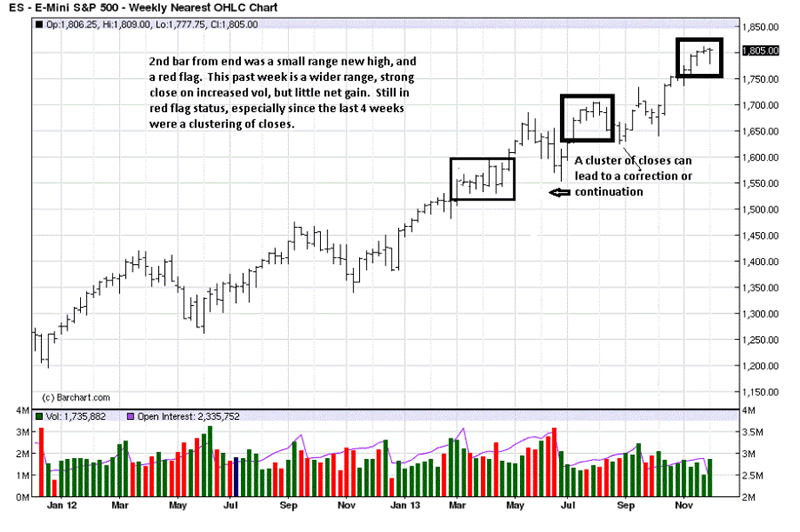
We like to see continuity, a story between the different time frames. There is a series of higher swing highs and higher swing lows, the easiest way to define an up trend. There was bullish spacing at the November swing low. The mid-November swing high was the same price as the next little swing low, so there was no spacing. This lets us know that the market reaction was relatively weaker, but within the context of being in an up trend.
Measuring the swing highs, at the left, confirms the lack of upside progress on the weekly chart, and when seen in more detail on the daily, the market is showing less ability to achieve greater net upside progress, another sign of a weakening of momentum. It does not mean the trend is changing, but just tiring. That could all change next week with a sharply higher market, for example. Just stay with the trend until there are greater signs of change.
If price fails to make new highs, next week, the note of caution would grow, and individual stock performance[s] should be addressed, relative to the index.
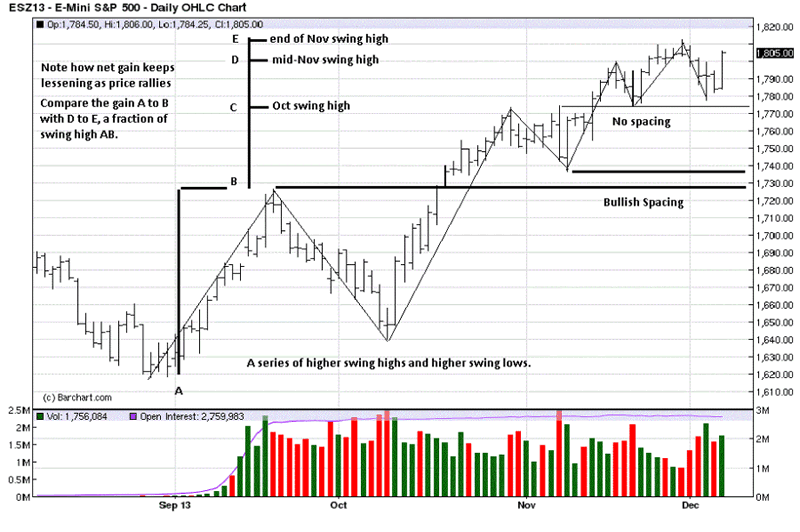
The Nas did make new highs, and continuation is expected for next week. The breakout high followed a clustering of closes, an example of how they led to more upside and not a correction. It is important to compare individual stock performance with this index to know how to respond to each stock’s development.
Examples follow.
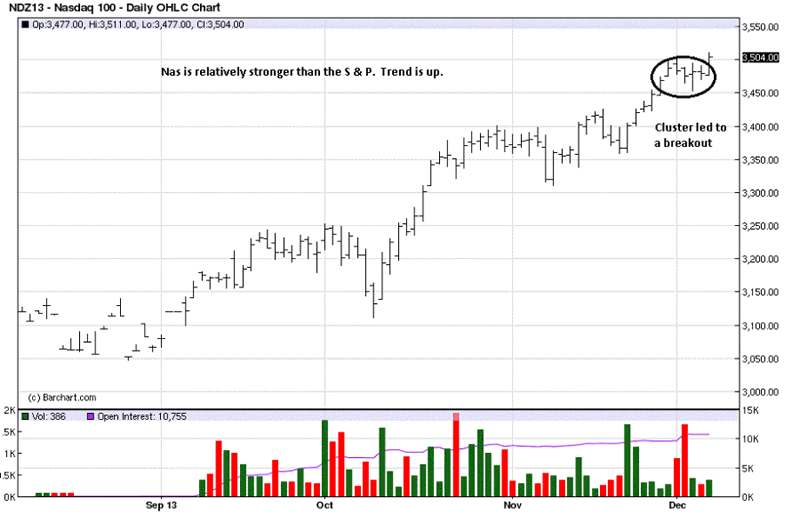
On 17 November, we gave one way to use developing market activity for initiating new positions that provided an edge. [See Markets Talk, Few Listen. Profit Is Only Objective]. It will review why each position was taken. The same stocks are reviewed below.
This was what the chart looked like on 17 November.
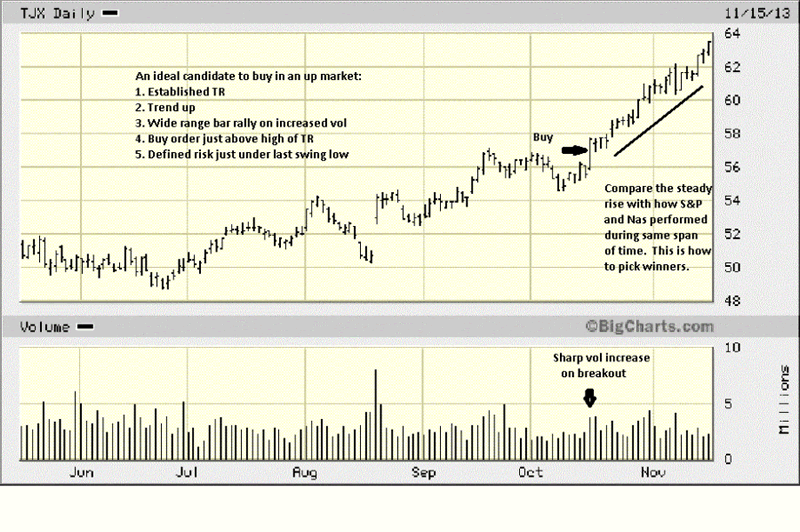
Buying “right” is important to provide a market edge and give time in the trade. The first expectation is for continuation higher, or the trade gets reassessed, even sold, if initial results fail to go higher, relative to the overall market.
Whatever one’s rules are for managing positions, [ You do have rules, do you not?!], you can see there has been ample time to determine whether to hold, take partial profits, stand aside, raise stops. Your rules would determine your strategy. This was, and continues to be a good trade.
Relative to the overall market, TJX is not rallying in a similar fashion. This is a small red flag to monitor the position closely. As a previous leader, it should continue to lead or, if not, be cause for concern.
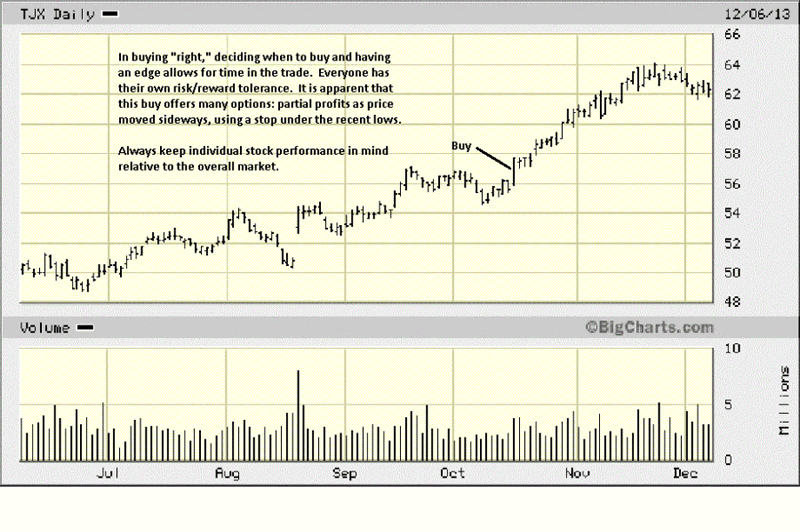
As of the time when this commentary appeared, SSYS was doing well.
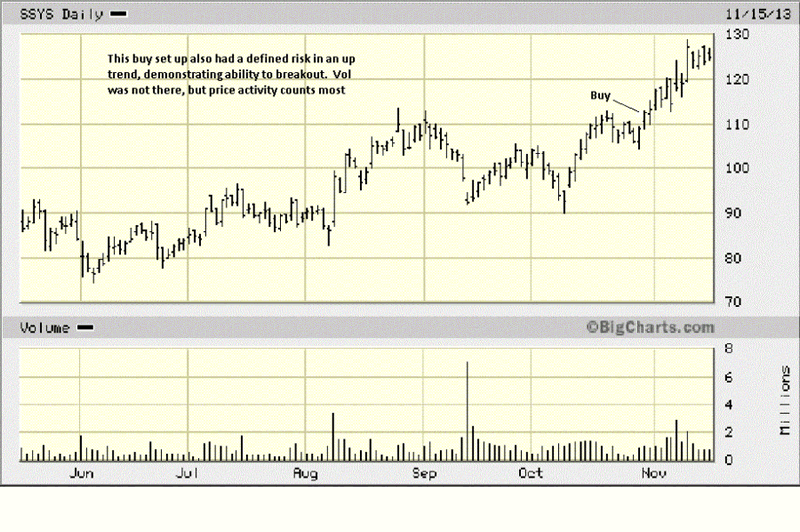
Reversal of fortune? Buying with an edge gave time to monitor the red flag high that had a poor close. A single bar is not always determinative, but it should be respected if there is more follow through to the potential reversal.
Next day, there was continued downside on increased volume. We would have looked at an intra day chart to make a decision to stay or cut loose, but assuming the worst, one could have exited at the low of the day for at least a minimal gain. You can see how after the next 10 TD effort, price was still weak, and this is a stand aside to reduce risk exposure.
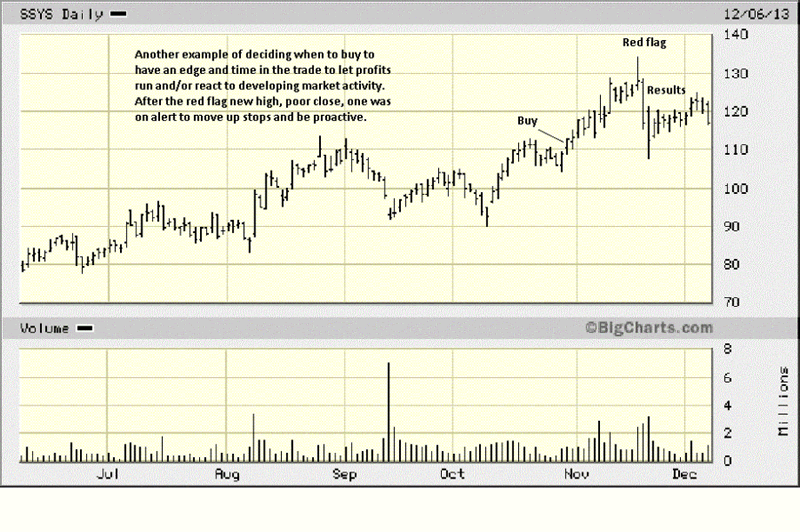
We noted the red flag high bar, similar to SSYS. This bar qualified as an OKR, [Outside Key Reversal - a higher high, lower low, and in this case, a lower close, not just from the previous day, but it erased the previous 4 TD activity]. [TD = Trading Day]
Unlike SSYS, there was no immediate downside follow through. Our message was, “Why stay with it?” That was due to a sideways move while the markets were still trending up. The motive was to reduce risk exposure, not maximize questionable profit potential
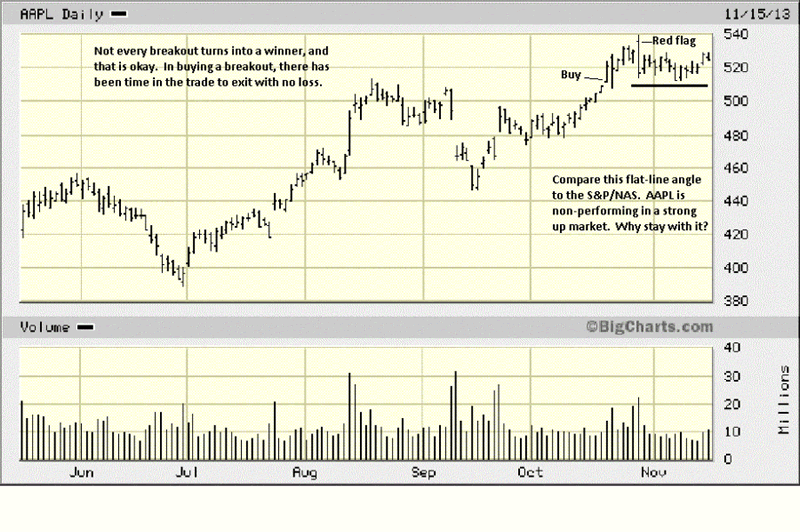
Reversal of fortune!
Assume a stand aside, there was little lost in the process. As it turned out, the reaction to the OKR was weak, very little give-back to the downside. What we know about weak reactions in a bull market is that they usually lead to higher prices. Using the same basis for taking a long position in mid-October, the pattern repeated itself and led to another buy the breakout opportunity.
This is a NAS component, and that index was holding well, giving additional insight into expectations for the buy set-up. We would view the last two bars as another red flag to watch the position closely relative to the overall market.
What we can take away from this is how to use pattern recognition, combined with some rules for engagement in order to take a position in the market that offers an edge. From the last commentary, DE was an example of what NOT to buy, even though there were many “investors” buying that stock, so there has been a variety of examples.
We recognize there are many other ways to get a market edge. This is to demonstrate how even just one kind of pattern set-up can lead to a profitable market experience. Why settle for less?
With an edge, you have time and opportunity in each trade to: control and minimize risk, monitor the position for taking partial profits, if warranted, and/or moving up stops to lock in profits should the market reverse. You have the individual stock performance and the relative overall index as another measure for how well, or not, each stock is doing.
Sounds like a plan, does it not? And one that works, based on market information and pattern recognition.
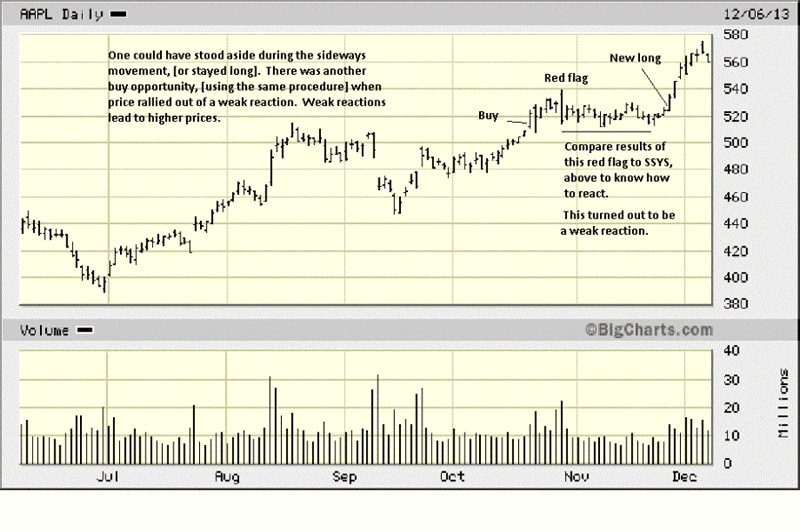
No comments:
Post a Comment